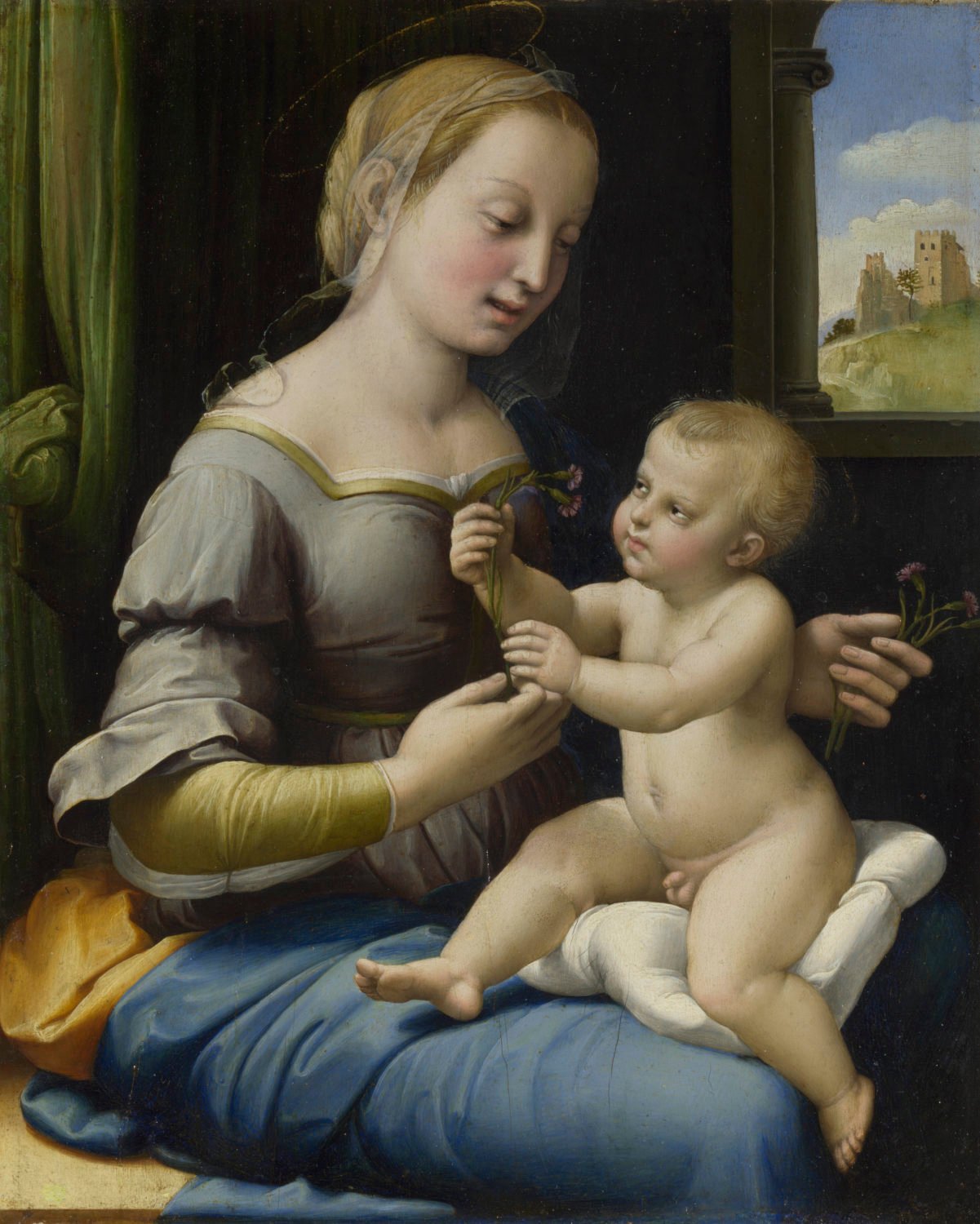
In a rare reunion, seven of Raphael’s Madonnas are coming together under one roof at Berlin’s Gemäldegalerie, which kicks of a series of shows next year dedicated to the Italian Renaissance master on the 500th anniversary of his death. Coincidentally, Raphael died just one year after Leonardo da Vinci, whose 500th anniversary has been celebrated throughout the world this past year.
There will be shows for Raphael in Rome, Milan, and London, following the Berlin exhibition, which opens to the public tomorrow. The Gemäldegalerie, which is part of the Berlin state collections, already touts a muscular collection of works by Raphael, including five paintings of the Virgin Mary with child, which are rarely seen together. Each of the Madonnas date to the beginning of the 16th century.
For the exhibition, the museum also secured a significant loan of another Madonna that is also one of Raphael’s most famous works: The Madonna of the Pinks. The oil painting shows Mary with her young son seated on her lap, both holding delicate carnations. It is on loan from London’s National Gallery for the first time.
Alexandra Enzensberger, curator of the exhibition says that the National Gallery’s Madonna of the Pinks was actually supposed to be in a Berlin collection. “This work was very nearly purchased in 1827 for a planned museum in Berlin, but the opportunity passed and so the work did not make it into the collection,” she tells Artnet News. “With the Madonnas together, we can better understand the development of Raphael as an artist before his Roman period and at the same time to tell the stories of the collection: stories of successful acquisitions, failed acquisitions, and the changing views of Raphael.”
Raphael’s Mary with the Blessed Child and Saint Jerome and Saint Francis. © Staatliche Museen zu Berlin, Gemäldegalerie / Jörg P. Anders.
“The show gives a precise view on Raphael before he became the star artist at the Vatican,” says the director of the Gemäldegalerie, Michael Eissenhauer, in a statement. The small exhibition, which concentrates on young Raphael, offers a taste of two larger shows to come in early 2020. On January 14, the museum will open a show of etchings by the 18th-century artist Johannes Riepenhausen, who documented Raphael’s life. Then, on February 28, the Kupferstichkabinett, another Berlin state institution, will display its collection of Raphael masterpieces, which includes rarely shown drawings by the artist as well as some of his students.
Raphael was born in 1483 in Urbino, Italy, and died suddenly of mysterious causes in Rome at age 37. Some historic Romans, including the writer Giorgio Vasari, saw Raphael as a “divine” artist because of the popular belief that he was born and died on Good Friday (some dispute his birth date), and for his prolific career that included religious portraiture.
Following the shows in Germany, Rome’s Scuderie del Quirinale will open an exhibition dedicated to Raphael on March 5 in collaboration with the Gallerie degli Uffizi in Florence, which is lending works for the exhibition. Another major venue will be the Ambrosiana in Milan, where Raphael is a permanent resident by way of his large-scale fresco The School of Athens from 1509. London’s National Gallery will open a major show dedicated to the artist (it owns 11 Raphael paintings) on October 3, 2020. For this season-ender, the National Gallery is procuring loans from the Louvre, the Vatican Museums, the Uffizi Gallery, and the Museo Nacional del Prado.
“Raphael in Berlin. The Madonnas of the Gemäldegalerie” is on view December 13 through April 26, 2020.